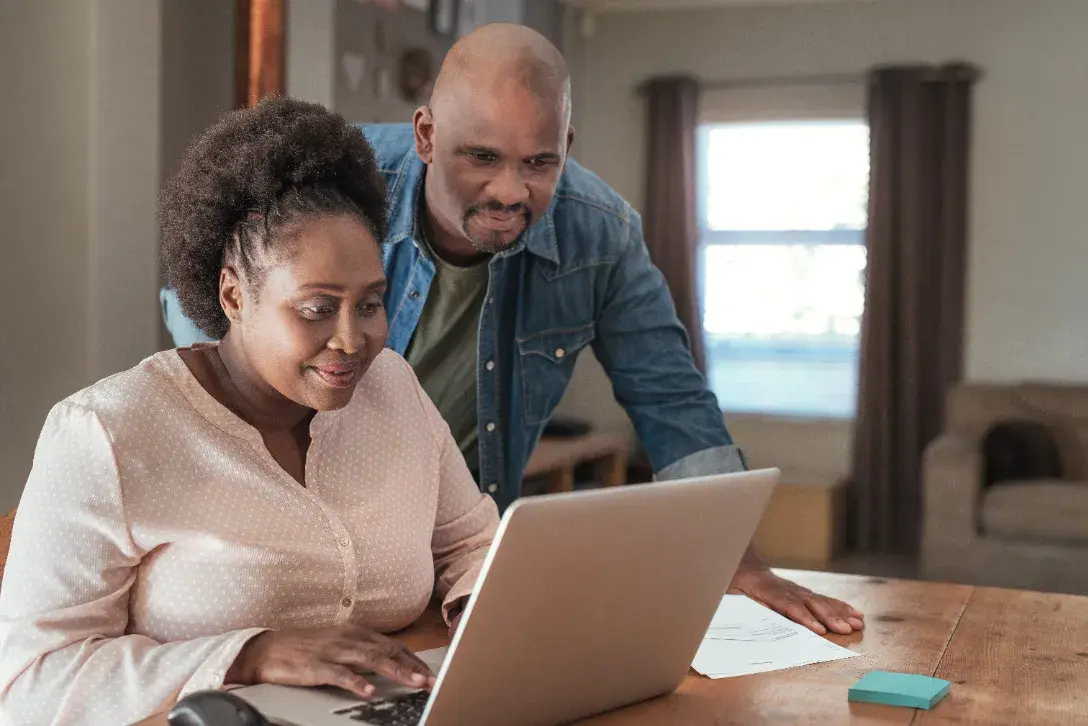Key Takeaways and Learnings
- Clinical trials fall short when communities of color are underrepresented.
- Trust and awareness are longstanding obstacles for participant recruitment.
- Trial sponsors fall generally to build community - non-inclusive marketing materials don't help.
- CASE STUDY: See how a Phase 3 trial sponsor increased its total pre-screened participants by 3.8x with Acclinate.
Healthcare and life science organizations are keenly aware of the need to revamp clinical trial recruitment strategies for more diverse participation. The consequences of failing to do so can include skewed data, delayed approvals from the U.S. Food and Drug Administration (FDA), higher costs - and the persistence of systemic inequality in U.S. healthcare.
Unfortunately, many best practices from traditional clinical trial recruitment companies are ill-suited to reach communities of color. The most common methods of patient recruitment for clinical trials fail to address longstanding challenges - ranging from site selection to patient retention to community trust.
With Diversity Actions Plans now required for most late-stage trials, now's the time for sponsors to rethink participant recruitment of underrepresented populations. Let's look at how current strategies miss the mark - and how investing in community with NOWINCLUDED and leveraging data with e-DICT™ can help sponsors step up their efforts to engage communities of color.
7 Common Failures of Patient Recruitment for Clinical Trials
A 2022 comparison of U.S. Census data and clinical trial registration data showed White Americans make up 72% of the total population, but 80% of clinical trial participants. This suggests that communities of color continue to be underrepresented in clinical trials across the country.
A second analysis showed the median representation of Black individuals in clinical trials is just one-third of the overall disease burden for Black patients with a given illness. For example, when it comes to breast cancer, Black women make up just 3% of clinical trial participants, but they have a 41% higher risk of mortality from this condition.
These statistics are a big part of the push on Capitol Hill to increase diversity in clinical trials. This push includes the FDORA act and two rounds of in depth guidance from the FDA.
How did the industry get here? There are seven important ways traditional clinical trials recruitment companies have missed the mark when it comes to reaching out to communities of color.
1. They don't get the word out.
Over 70% of patients (regardless of race or ethnicity) are either unaware of clinical trials or don't know how to participate in them. Physicians are less likely to discuss clinical trials with patients from communities of color, due in large part to implicit bias about whether these patients would be ideal candidates. While the willingness of members from communities of color to participate in research depends largely on how they're communicated with, trial sponsors are clearly missing an opportunity to expand their reach to historically marginalized groups. Sustained, omnichannel engagement at a community level is essential to achieving awareness in communities of color. Once the broader community is engaged, AI-powered analytics tools such as e-DICT™ can identify likely trial candidates in underrepresented populations to support more targeted outreach efforts.
Acclinate’s NOWINCLUDED community platform includes over 100,000 members. Discover how it works here.
2. They can't overcome trust issues.
Many people of color don't trust the medial establishment for valid reasons. Trust issues stem from past violations, such as the Tuskegee syphilis study and the Henrietta Lacks case, as well as the more recent pregnancy and childbirth experiences of tennis champion Serena Williams and pop superstar Beyonce. Mistrust on its own causes patients to be wary of medical research. When coupled with implicit bias, it can contribute to patient recruitment for clinical trials falling far short based on the assumption that underrepresented community members don't want to participate. Trial sponsors must take proactive actions to engage patient populations, cultivate an open dialogue around clinical research, and invest in long-term relationships to galvanize trust.
3. They don't appeal to the audience.
When patients from communities of color do express interest in a trial, it's common for them to see marketing materials featuring White patients or speak to trial investigators or staff members who are White. While early-stage studies often face time and budget constraints, that's no excuse for failing to make potential trial participants from underrepresented populations feel included. Working with a community platform like NOWINCLUDED can help sponsors meet patients where they feel seen, heard, and supported.
4. They select trial sites poorly.
On a global level, when trial sponsors stick to the U.S., Canada, and Europe, they may struggle to get representation from Asian, Black, and Hispanic communities. Within the U.S. specifically, going back to the same academic medical centers repeatedly means continuing to draw from the same pool of potential participants. It doesn't help when trial sites are far from the communities of color sponsors aim to attract. Limited transportation options also play a role in preventing participation, and long travel times rarely accommodate work schedules or childcare needs. Clinical research initiatives must carefully consider the best locations for expanding access to trials while extending support to those who face mobility obstacles.
5. They don't build community connections.
Even when clinical trial recruitment companies select sites within communities of color, they often send in a recruiter or investigator with no ties to the community. When sponsors do this, they pass up a chance to work with community partners who have built longstanding relationships with the audiences sponsors wish to target. Whether established non-profit organizations or informal personal networks, partners understand the lived experiences of community members and are positioned to help sponsors engage with the right people, from recruitment through conversion.
6. They fail to retain participants.
Participants may drop out of clinical trials for many reasons. As noted, sometimes the trial site is too far away, and patients can't make time to balance in-person visits with their obligations as parents, employees, or caregivers. In other cases, trial sponsors don't offer enough touchpoints; participants may not receive timely reminders about upcoming visits, and they may not feel like they have someone to turn to if they have questions. Finally, manual processes for sharing data or reporting side effects add friction to the participant experience and further contribute to frustration.
7. They don't hold themselves accountable for underrepresentation.
Creating Diversity Action Plans is one thing. But actually implementing them is another. Ideally, sponsors should set numerical targets for enrolling patients from underrepresented populations and measure improvements in clinical trial diversity over time. However, this can be a tall order; it needs to be done during the study design phase, and it often means broadening eligibility criteria for a trial. Ultimately, clinical trial recruitment companies face no explicit penalties for falling short of moving the needle on patient recruitment in communities of color. However, recent guidelines from the FDA - backed by Congress - has outlined more robust diversity expectations throughout the lifecycle of a clinical trial.
Improve Patient Recruitment for Clinical Trials With Acclinate
Both anecdotal evidence and peer-reviewed research have shown communities of color are willing to participate in clinical trials. The most successful efforts to engage underrepresented populations involve collaboration among trial sponsors, supporting sites, community organizations, and other stakeholders who can build trust with patients.
Acclinate isn't a clinical trial recruitment company. We know that patient recruitment for clinical trials among underrepresented groups can't happen responsibly without community relationships - and we know that engagement and recruitment are complementary, but distinctive, processes. With NOWINCLUDED, we have built a diverse community of individuals well-informed about their medical journeys. With e-DICT™, we offer insight into who's engaging with which community and who might be a promising candidate for a trial.
When it comes to cultivating more inclusive clinical research, you can't rely on traditional recruitment methods. Discover the power of community-building with advanced AI-powered analytics to ensure you reach your DEI goals - responsibly, genuinely, and thoroughly. To find out more, schedule a 1:1 meeting with our team.






.webp)







